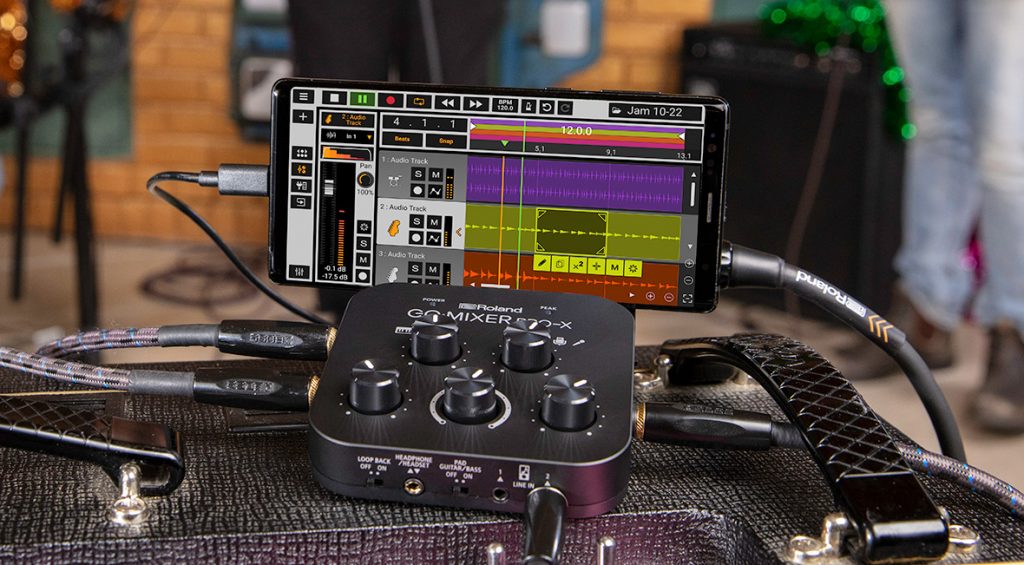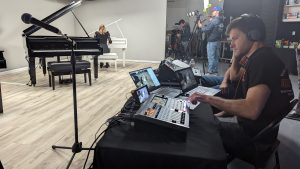- The most simple entry point to livestreaming is the camera/microphone combination found on any smartphone.
- Using a smartphone to capture content requires dedicated software.
- AeroCaster supports wirelessly connecting, switching, and streaming multiple cameras and smart devices.
The influencer industry has become essential to any brand’s marketing plans. As a result, livestreaming has taken on heavyweight commercial proportions. Platforms like TikTok were already widespread as the pandemic pushed us online. Indeed, today it’s impossible to deny that livestreaming is a force. With basic knowledge, anyone can access convenient and affordable streaming. The most simple entry point to livestreaming is the camera/microphone combination found on any smartphone. Moreover, as mobile devices evolve, the results continually improve. So what do you need to get started?
The Easiest Place to Start
Professional livestreams have been the province of specialized hardware systems. These use software to offer more sophisticated results. There is both free and paid software out there. Also, there are solutions like Roland’s hybrid AeroCaster solution. This product simplifies setting up cameras, computers, and switchers for multi-camera livestreaming. Applications include music performances, online talk shows, and live commerce. Most of these require a combination of dedicated hardware and mobile devices.
Plus, there are many powerful additions available to aspiring content creators. Roland GO:MIXER PRO-X enhances audio, while clip-on lenses will improve streaming quality. Both add polish to productions, making your livestream stand out.

A Dedicated App
Using a smartphone to capture content requires a dedicated app. Examples include Larix Broadcaster for access to various streaming services, TikTok for a single platform on iOS, or Periscope and the gaming-focused Twitch on Android. These handle encoding duties and add overlays or preset visual templates. The app then sends the file to an online video platform via RTMP ingest. This forwards it to a content delivery network using the HLS streaming protocol.
There are both free and paid software options. Also, there are solutions like AeroCaster. It simplifies setting up cameras, computers, and switchers for multi-camera livestreaming.
Moving Platforms
Let’s discuss switching to a computer platform. Livestreaming on Facebook with the Chrome browser is simple. It merely requires connecting a webcam and using the Live Video option on the profile or homepage. With settings and preferences chosen, Go Live starts the stream. It’s as efficient as a smart device, if not readily mobile. In addition, switchers like Roland VR Series have USB outputs. These send the same signal as a webcam, making them easy to integrate with the computer.
The Next Step
At this level, livestreaming is simple and accessible. Let’s take a step up from the limitations of working directly from a mobile device and livestreaming built into a social media platform. The next level utilizes streaming/encoding software to create more advanced, professional streams.

Understanding RTMP and HLS
The app you choose for livestreaming will do the heavy lifting to encode your video into RTMP (Real-Time Messaging Protocol) ingest and HLS (HTTP Live Streaming) streaming protocol. Still, it’s useful to understand how both work. RTMP is widely used for ingestion and receives support from nearly all livestreaming software. HLS (developed by Apple) covers nearly every mobile device, tablet, computer, smart TV, and gaming console. HLS is regularly updated to keep pace with developments in streaming.
Encoding Basics
Using an encoder requires more equipment and technical work than a mobile device or webcam but offers expanded facilities. The host computer may determine how far one can push these, as it must be capable of supporting the level of sophistication of the stream. The internet connection is also a potential failure point. It needs to support the stream content. An encoder gives control over resolution (number of pixels) and bit rate (video quality) that can help optimize or limit the required bandwidth for a stream.
Using an encoder requires more equipment and technical work than a mobile device or webcam but offers expanded facilities. The app you choose for livestreaming will do the heavy lifting to encode your video.
OBS Studio
Screens, layouts, and shots are templates populated by sources (webcam, graphics, etc). An RTMP encoder enables placing these and sizing to your preferences and designs. Give special consideration to audio, as it may not simply accompany visuals. Correct audio quality and level are essential to support visual content.
One option is computer-based livestreaming software like OBS Studio (previously Open Broadcaster Software). OBS provides free, open-source, and cross-platform screencasting and streaming. While limited in its own right, OBS provides access to an extensive range of plug-ins. These extend its functionality, including features found in high-end livestreaming software.
Features
Available for macOS 10.13 or newer, Windows 8, 8.1, and 10, as well as Ubuntu 18.04 operating systems, these features are robust. They include managing audio, video, image, web browser, and graphics sources. In addition, users get source switching and chroma keying for layering images and video streams. OBS supports green screen super-imposition, transitions, filters, and other professional tools.
Streaming Platforms
Two platforms that have long been in contention for the livestreaming user base are StreamYard and StreamLabs. StreamYard provides a SaaS (Software as a Service) option, while StreamLabs targets Mac-OS and Windows users. Users of both platforms span social streaming and gaming to small businesses. The platforms themselves cover the spread of social media channels. These include Facebook, YouTube, LinkedIn, Twitter, Twitch, etc. StreamYard and StreamLabs can create custom RTMP outputs. They both work free of charge, but the premium features of StreamLabs are a paid-for extension of the free software.
Hardware Switchers
Both platforms support HD streaming, broadcast recording, scheduling events, live chat, and analytics. This gives them capabilities in-line with and sometimes surpassing those of terrestrial broadcasting. Keep in mind that using a hardware switcher can take the burden off the processor. Solutions like the Roland VR Series and the UVC-01 will act as the front end for these apps.
Using a hardware switcher can take the burden off the processor. Solutions like the Roland VR Series and the UVC-01 will act as the front end for these apps.
The Power of AeroCaster
Adding dedicated hardware to the picture, Roland’s AeroCaster makes it easy to get great audio and control your livestream. It wirelessly connects, switches, and streams multiple cameras and smart devices (iOS and Android) for high-quality livestreaming. Under the joint control of the hardware surface/audio interface, users pair it with a host iPad. AeroCaster’s use of a wireless system enables free placement of cameras and smartphones. This allows for content capture, single-operator use, and switching/encoding/streaming software.
An Integrated System
The system uses a media pool for integrating video, audio, photos, and graphics stored on the iPad into a stream. AeroCaster will stream directly to YouTube, Facebook Live, and Twitch, as well as custom RTMP channels over Wi-Fi or 4G/5G cellular networks. Further functionality is forthcoming. In addition, the AeroCaster Live app provides a simple solution for screen sharing from computers and mobile devices. Presenters can connect via the Google Chrome browser over Wi-Fi, without needing cables, video adaptors, or dongles.
There are many and varied routes into livestreaming. This means that almost everyone has access to an audience of unprecedented size and value. Ultimately, it’s a world of opportunity that shows no indications of going away any time soon.




